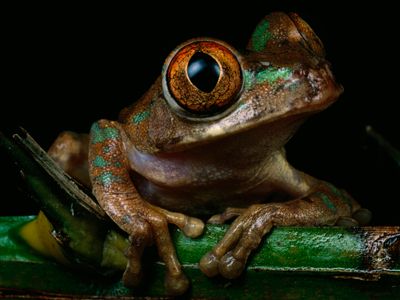
Tree frogs, like this African tree frog, mostly live (not surprisingly) in trees, though some inhabit smaller plants, and a few species are ground-dwellers. Next, see a frog that's also known as a mission golden-eyed tree frog.
Advertisement
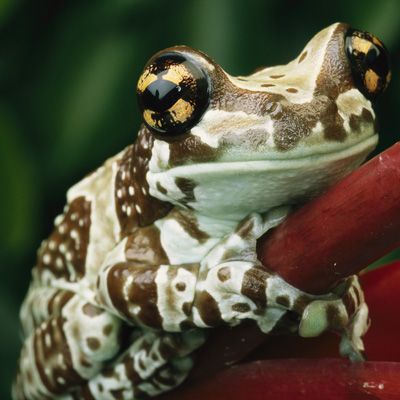
Amazon milk frogs are carnivorous and eat small insects, crustaceans and arachnids. Next see a frog known as the "Pac Man frog" due to its healthy appetite.
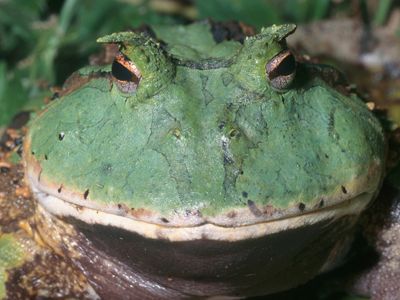
Amazon horned frog is a striking frog due to its large mouth that's approximately 1.6 times wider than the length of its body and is capable of eating prey the size of small rodents. Next, find a burrowing kind of frog.
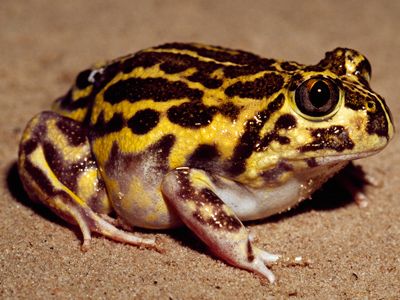
Spadefoot toads (Scaphiopus holbrooki) use their spade-shaped feet to burrow and dig. Next, find a frog that can be heard half a mile away.
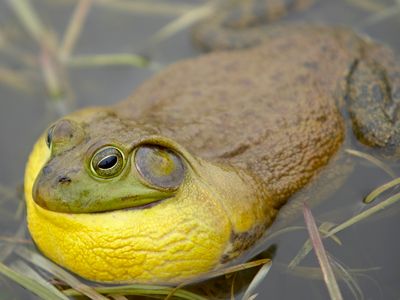
The bullfrog is one of the world's largest frogs and the biggest in North America. Its deep, hoarse call is louder than that of any other species of frog. Next is a toad that uses leaves as camouflage.
Advertisement
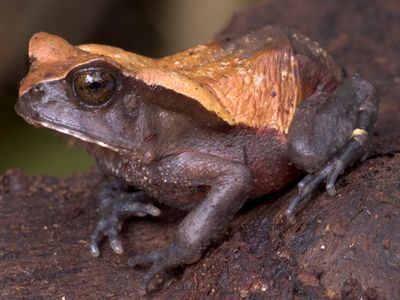
The Cameroon toad (Bufo superciliaris) lives mainly in Central Africa and uses its colors to blend in with fallen leaves. Next find a frog also known as an African bullfrog.
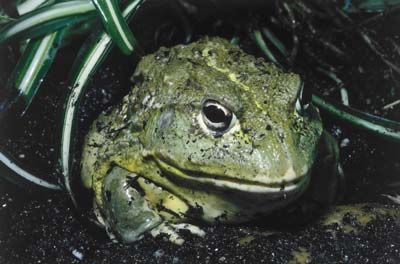
This African pyxie frog (Pyxicephalus adspersa) has bumpy, toadlike skin. Find two mating tree frogs next.

Red-eyed tree frogs mate on a leaf in the rainforest. Note the difference in size and color between the male and female. See the female red-eyed tree frog up close next.
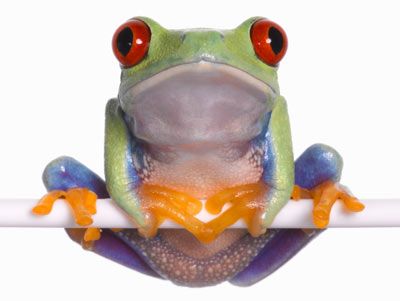
Tree frogs have pads at the ends of their fingers and toes. These pads help in climbing because they're rough and covered with a sticky secretion. Find a fruity-sounding frog next.
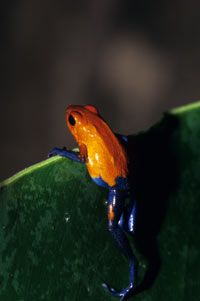
Poison dart frogs, like this strawberry poison dart frog (Dendrobates pumilio), produce a poison on their skin that's strong enough to kill almost any predator. Next, find an endangered African frog.
Advertisement
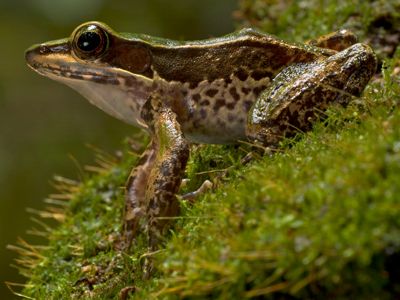
African golden frogs (Amnirana occidentalis) are only present in primary, undisturbed forests, making them vulnerable to habitat changes. Find the "giant neotropical toad" next.
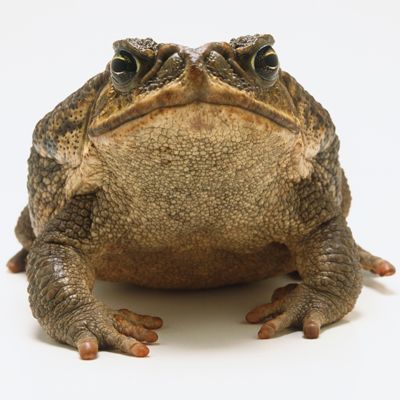
Cane toads (Bufo marinus) were originally used as a natural pest control to get rid of insects in sugar cane fields. Hop or jump to the next photo to see a toad from Peru.
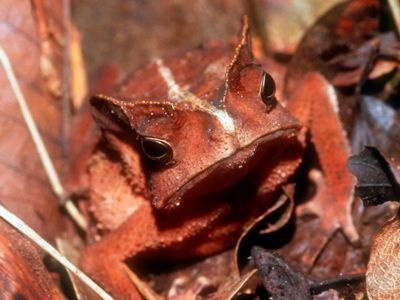
This Peruvian tree toad uses its red hue to blend in with the fallen foliage. Find a South African frog that's trying to hide from you next.
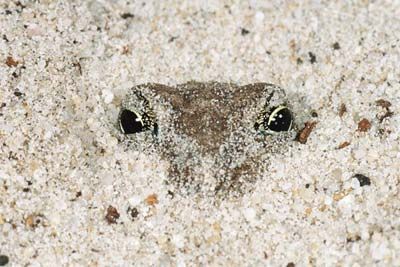
The Cape sand frog (Tomopterna delalandii) uses its hind legs to burrow into the sand, where it hibernates during the South African winter. Find the snakelike caecilian next.
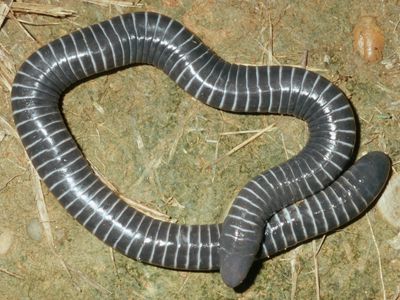
Caecilians are legless, tailless tropical amphibians of the family Caecilidae. Next, see a caecilian's body up close.
Advertisement
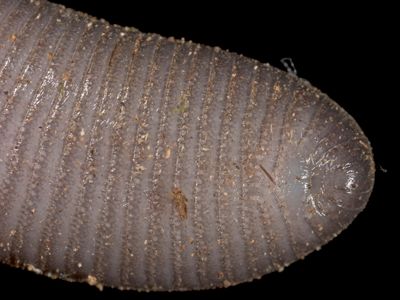
Unlike a snake or legless lizard, the caecilian has no tail and its body ends abruptly in a cloaca or excretory cavity. Caecilians primarily burrow underground and are hard to find. Take a look at a newt larva next.
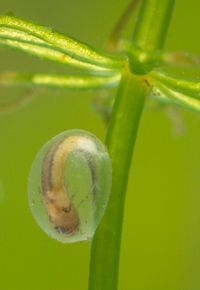
The female newt lays as many as 400 eggs on submerged vegetation or submerged rocks. Here you see a great crested or warty newt (Triturus cristatus) egg. See the hatched larva next.
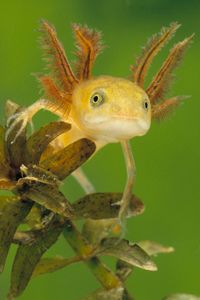
The great crested or warty newt larva emerges from an egg in about five weeks. Find a red eft (a young newt) in the next picture.
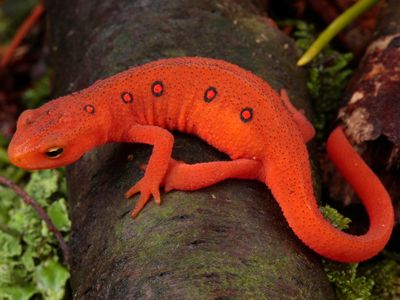
A red eft crawls on the forest floor in this picture. It may take the eft, or migrating salamander, anywhere between one and three years to mature to adulthood. See a common salamander of North America next.
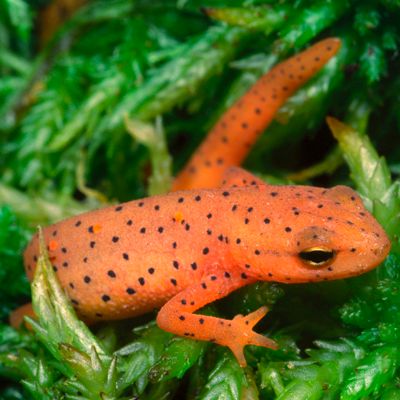
The skin of many species, including this Eastern newt eft, secretes a substance that's toxic to predators. Find a newt also known as the "orange-bellied newt" next.
Advertisement

Rough-skinned newts (Taricha granulosa) are highly toxic, especially if ingested. Find the last type of amphibian next.
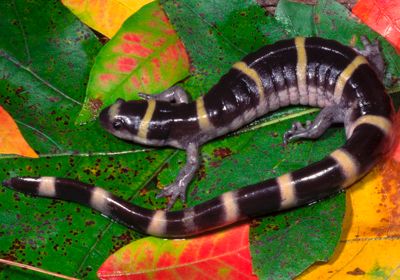
The ringed salamander (Ambystoma annulatum) is native to Oklahoma, Missouri and Arkansas. See a messy-sounding salamander in the next image.
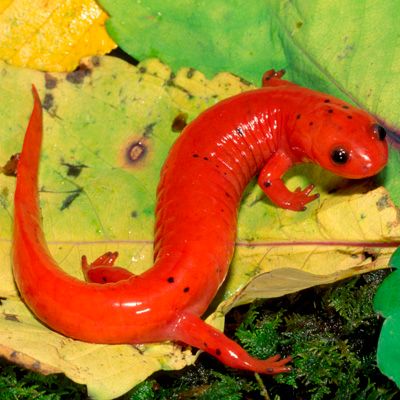
Salamanders, like this mud salamander, grow up the same way frogs and toads do. They hatch from eggs and emerge as larvae that look a lot like tadpoles. A hungry, Asian salamander waits up next.
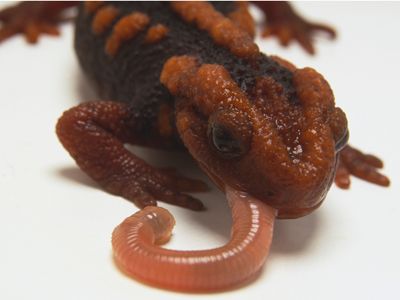
No, that's not the salamander's tongue. This mandarin salamander is chomping down on a worm. Finally, see a gigantic aquatic salamander next.
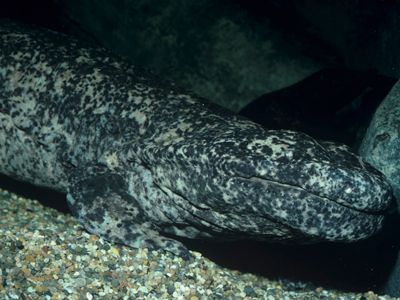
The Chinese giant salamander is one of the largest living amphibians on Earth. Check out the rest of our amphibian, reptile, and animal articles in the Animals Channel.
Advertisement